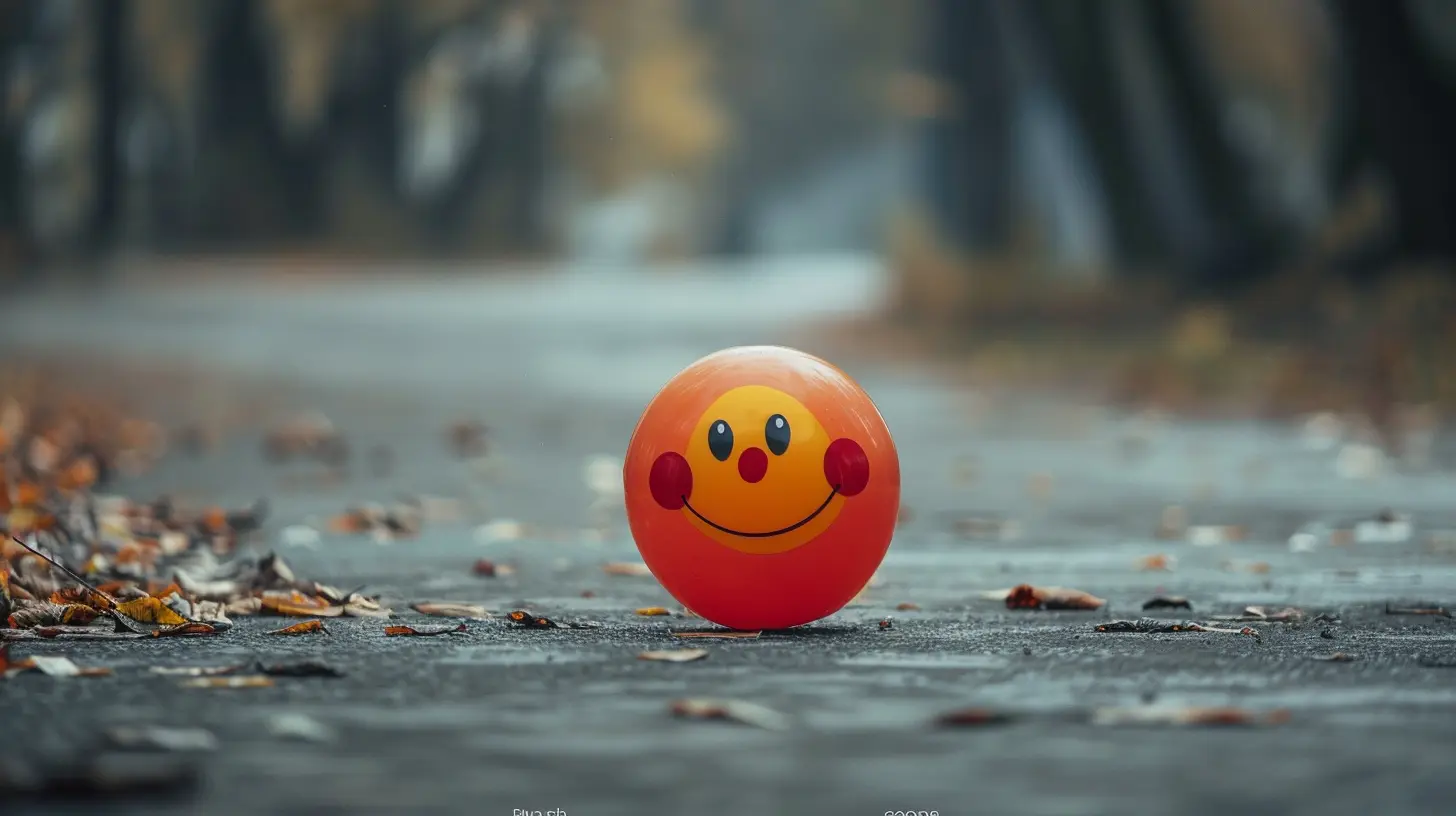The Role of Humor in Content Marketing: Risk or Reward?
17 June 2025
Let’s face it—if websites had personalities, most would be that one overly enthusiastic guy at networking events who tries way too hard to sell you something. You know the type: stiff, robotic, and about as fun as reading terms and conditions out loud. But once in a while, you stumble upon a brand that cracks a joke, pokes fun at itself, or—gasp—makes you laugh. Yup, it's using humor in content marketing.
The question is: should your brand do the same? Is humor the golden ticket to engagement paradise or a one-way ticket to Cancel-ville? Welcome to the wild world of humor in content marketing where the stakes are high, the memes are spicy, and one misstep can send your brand trending—for all the wrong reasons.
So, let’s talk about it. Is humor in content marketing a stroke of genius or a marketing managers’ recurring nightmare?
What the Heck is Humor in Content Marketing Anyway?
Before we spiral into the “Should you?”, let’s cover the “What is it?”. Humor in content marketing is exactly what it sounds like—using comedic elements, clever puns, or light-hearted sarcasm to make your content less snooze-inducing.Think of Wendy’s Twitter roasting fast food rivals with the elegance of a stand-up comic on open mic night. That, my friend, is content marketing with a side of sass. Or Old Spice commercials—they're basically fever dreams with body spray.
Humor isn’t just about being funny. It’s about being memorable. And in the overcrowded digital landscape of "buy this" and "click that," standing out with a laugh (or at least a chuckle) can be pure gold.
Why Humor? Because Boring Is So Last Season
Let’s get real—people don't wake up in the morning craving more ads. Your audience is already bombarded with emails, pop-ups, and influencer promos every 3.2 seconds. So if your content doesn’t strike some kind of emotional chord—humor included—you’re just adding to the noise.1. It Grabs Attention (Like, Immediately)
We’ve built up online immunity to boring content. Straightforward, informative, keyword-stuffed blogs don’t cut it anymore. Make someone laugh, though? That’s a jolt to the brain they weren’t expecting. It’s like seeing a cat in a business suit—confusingly delightful.2. It Builds Brand Personality (Which Apparently Is a Thing Now)
People don’t want to buy from faceless corporations with names that sound like fictional companies from dystopian novels. They want to connect with brands that feel human. Humor gives your brand a voice—and if that voice makes people laugh, even better. It's the marketing equivalent of bringing cupcakes to the office on Monday. People notice. People like it.3. It Encourages Sharing (Welcome to Viral Town)
Funny content travels faster than wildfire at a barbeque festival. People don’t just scroll past it—they tag friends, repost, and think, “This brand gets me.” Suddenly, your engagement spikes and your marketing team does a tiny happy dance in the break room. Win-win.
But Wait—Is Humor a Double-Edged Sword?
Oh, absolutely. Humor can boost your brand or boomerang back into your face like a bad dad joke at Thanksgiving dinner.1. Humor is Subjective (And People Are Sooooo Sensitive)
What makes one person laugh till they wheeze might offend another so deeply they start a Change.org petition. Humor lives in a land of nuance, culture, timing, and tone. One wrong turn and boom—Twitter is eating your brand alive, and suddenly your PR team is camping out in crisis-control mode.2. It Can Distract From the Message (Oops)
Sometimes brands get so caught up in being funny that they forget the actual point—selling stuff. If your audience remembers the joke but not what you’re selling, congratulations! You just funded a viral campaign for no return on investment. Yay?3. Try-Hard Syndrome Is Real
There’s nothing more painful than a brand trying too hard to be funny. It’s like watching your dad dab in 2024—it was never cool, and now it’s just cringe. If humor isn’t authentic to your brand voice, don’t force it. Otherwise, you’ll sound like that one friend who Googles jokes before parties.
So When Does Humor Actually Work?
Okay, enough of the doom and gloom. Let's talk about when humor actually shines like a unicorn-powered spotlight.1. When It's Aligned with Your Brand
If you're a funeral services company, maybe keep the knock-knock jokes to a minimum. But if you’re selling novelty socks or running a coffee shop named “Espresso Yourself,” then puns and witty banter? Absolutely encouraged.Funny content should feel natural, not like your intern hijacked the brand account and started tweeting like a stand-up comedian. Your humor should match your brand's vibe.
2. When You Know Your Audience
Are your customers Gen Z TikTokers or Baby Boomers on Facebook? The type of humor that lands with each is wildly different. Know your crowd. Speak their language. Use memes, puns, or dry wit accordingly. Or risk getting left on “read.”3. When You're Not Punching Down
Rule #1 of brand humor: don’t be a jerk. Making fun of marginalized groups, competitors’ failures, or sensitive topics might get temporary attention—but it’s not the good kind. Be clever, not cruel. Be witty, not woke-washing. And for the love of content gods, proofread before publishing.Types of Humor You Can Actually Use Without Losing Sleep
You don’t have to be the next SNL writer to inject humor into your content. Here are some safe (and fun) types of humor that even the most cautious marketers can dip their toes into.1. Puns and Wordplay
Sure, puns are the dad jokes of the literary world—but they work. They're memorable, quirky, and often make for great headlines. "Donut Miss Our Sweet Deals" for a bakery? Chef's kiss.2. Self-Deprecation
Nothing says “we’re relatable” like poking fun at yourself. It shows humility, honesty, and charm. Just don’t overdo it or people might start taking you literally. No one wants to buy from a brand that constantly says, "We're kind of terrible."3. Pop Culture References
Timely memes, TikTok trends, or movie quotes can be gold…if you use them while they’re hot. But beware: nothing ages like milk in the world of pop culture. That “Harlem Shake” reference you just drafted? Yeah, delete that.4. Satire and Parody
This one’s spicy. Satirical content that mocks industry absurdities can score major points—but tread carefully. Use it to expose truths in a playful way, not to launch a passive-aggressive war with competitors.Real Brands That Nailed Humor (And Lived to Tell the Tale)
Let’s give a slow clap to a few brands that didn’t just flirt with humor—they married it.Wendy’s Twitter
The queen of corporate clapbacks. Wendy’s roasts competitors with savage wit while staying on-brand. It's bold, fearless, and surprisingly effective. Their tweets get shared more than grandma’s banana bread recipe.Old Spice
Remember the “I’m on a horse” campaign? It was so weird, it worked. Absurd humor, over-the-top visuals, and a mustachioed hero made Old Spice relevant to a new generation. The takeaway? Sometimes, weird sells.Snickers
“You’re not you when you’re hungry.” Iconic. Snickers used relatable humor tied to the human condition—aka, hanger—and turned it into a timeless campaign. Smart, simple, and snackable.Tips for Making Humor Work Without Getting Canceled
Still want to take the comedy plunge? Here are some final tips before you hit publish and start praying to the social media algorithm gods.- Test It First: Share your content with a few people before going live. If they laugh, great. If they wince, maybe rethink it.
- Be Culturally Aware: What’s funny in one country might be offensive in another. Humor doesn’t translate well when you cross borders, so be careful if your audience is global.
- Stay on Brand: If your brand voice is formal, don’t suddenly post a "Yo mama" joke. Ease into the humor pool—don’t cannonball into it without checking the depth.
- Apologize if Needed: If your joke does flop (hey, it happens), own it. Apologize sincerely, learn, and move on. Double-down denial only makes it worse.
Bottom Line: Humor is a Risk. But Sometimes, It's the Best Kind.
At the end of the day, humor in content marketing is like pineapple on pizza: some people love it, others will disown you for it—but you remember it either way.If done right, humor can strengthen your brand, humanize your message, and give people a reason to engage. If done wrong? Well, at least you’ll be famous for a minute.
So is humor a risk? Sure. But in a digital world full of “meh,” being a little risky might be exactly what your brand needs.
And hey, if all else fails—just add a cat meme. Works 97% of the time. Probably.
all images in this post were generated using AI tools
Category:
Content MarketingAuthor:

Lily Pacheco
Discussion
rate this article
2 comments
Lyla McLaurin
Humor can be a double-edged sword in content marketing. While it engages and entertains, it risks alienating some audiences. A thoughtful approach can balance creativity and brand messaging effectively.
November 10, 2025 at 1:57 PM

Lily Pacheco
Absolutely! Striking the right balance is key—humor can enhance engagement but must align with the brand to avoid disconnecting from the audience.
Porter Kim
Great insights on the balance of humor in content marketing! It’s true that humor can create a powerful connection with audiences, but knowing when and how to use it is key. Thanks for shedding light on this nuanced and important topic!
June 23, 2025 at 10:31 AM

Lily Pacheco
Thank you for your thoughtful comment! I'm glad you found the insights valuable—striking the right balance with humor is indeed essential for effective content marketing.


